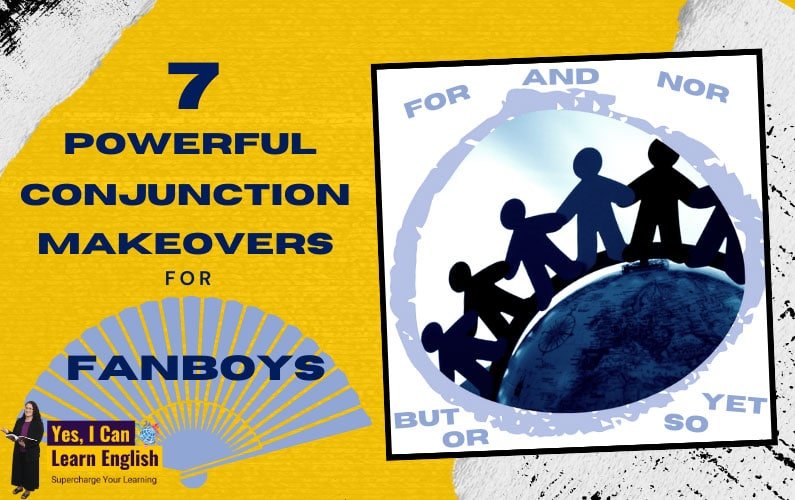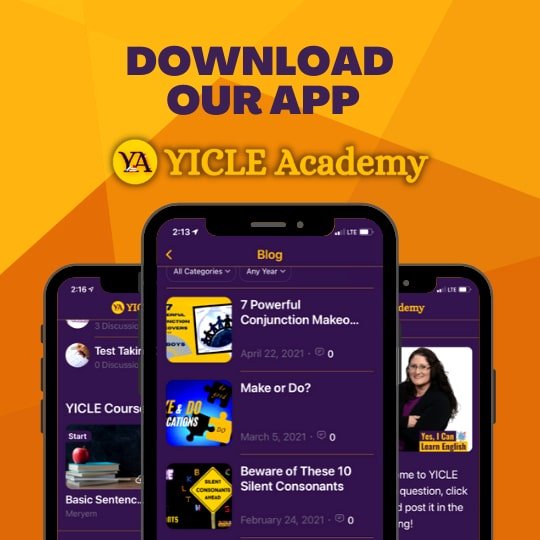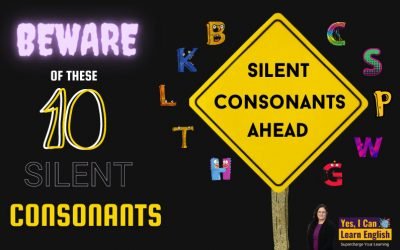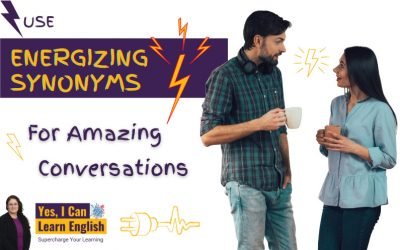What is a Conjunction?
In grammar, a conjunction is a part of speech that connects words, phrases, or clauses.
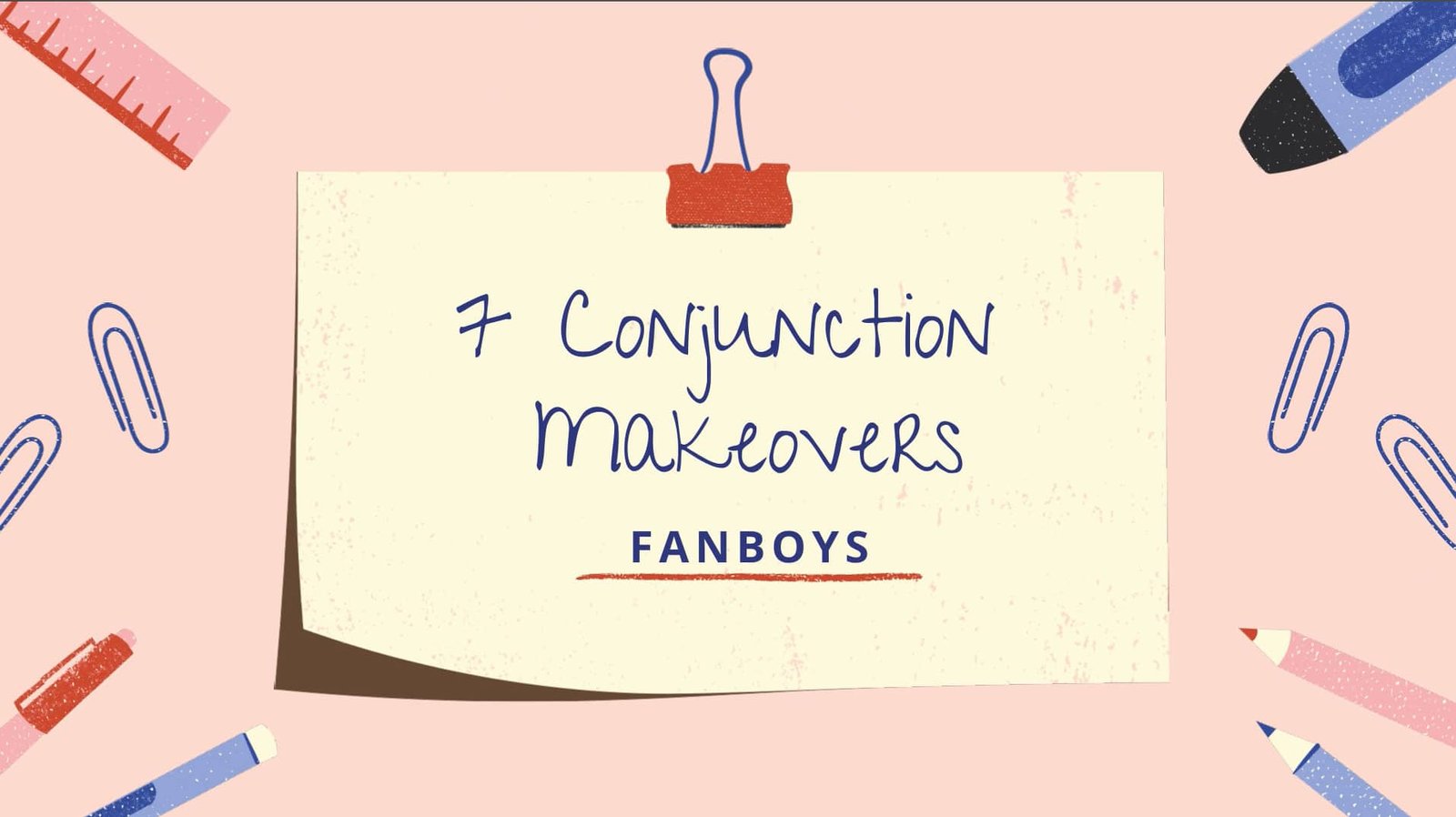
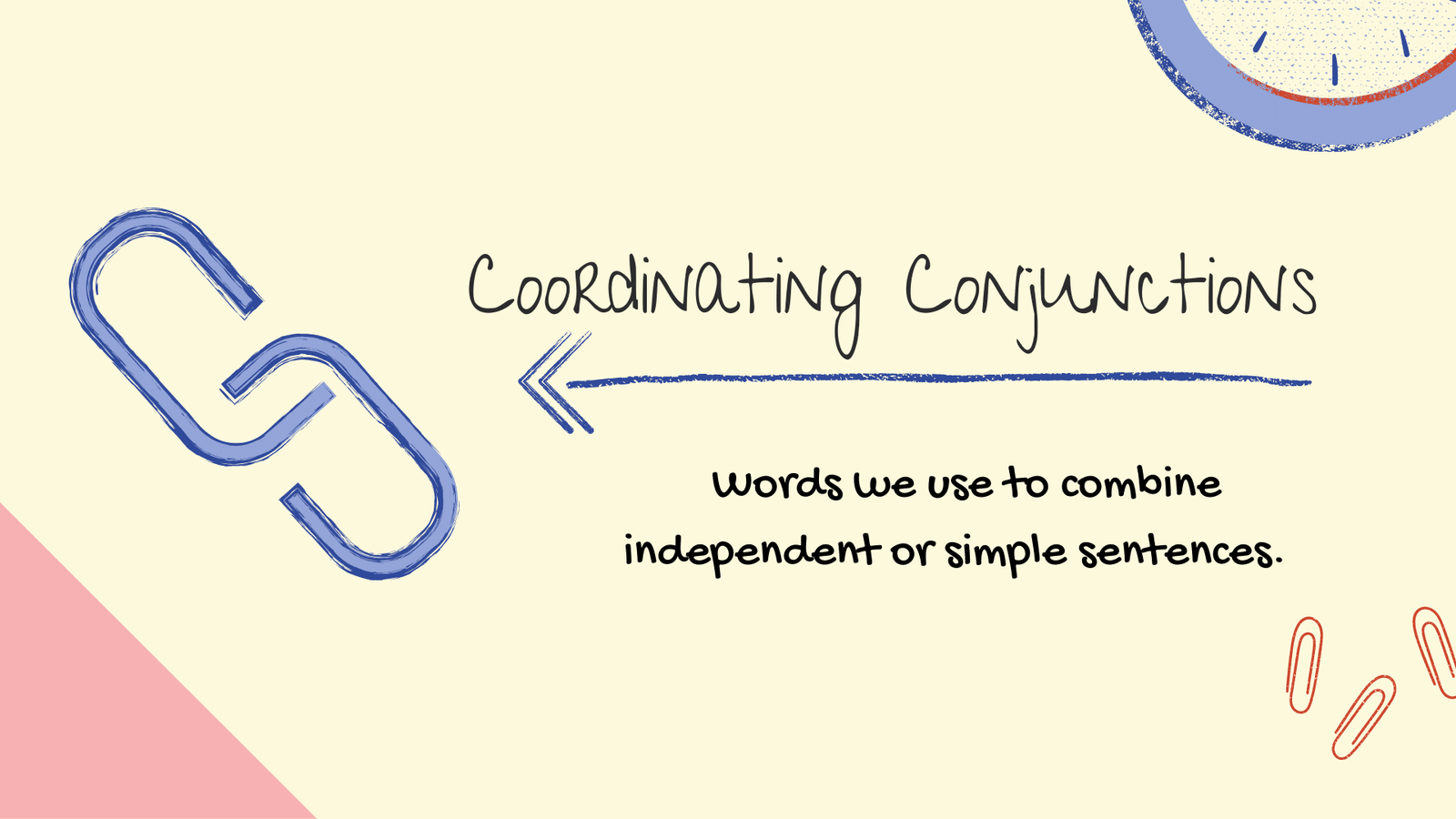
Have you ever heard of the acronym FANBOYS?
It is neither about fans or boys, but it is a way to remember the seven coordinating conjunctions we use to combine independent or simple sentences: “for,” “and,” “nor,” “but,” “or,” “yet,” “so.”
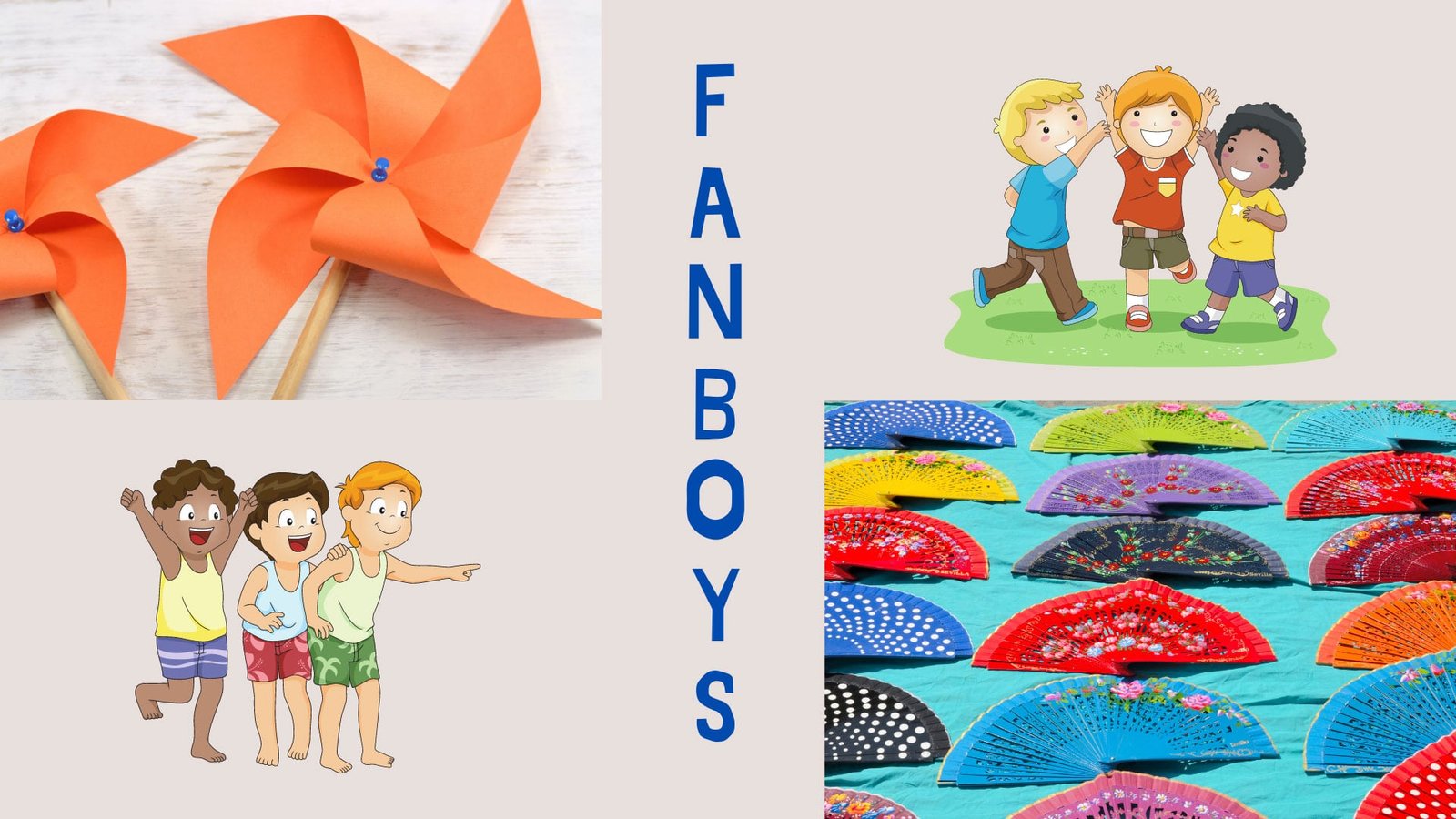
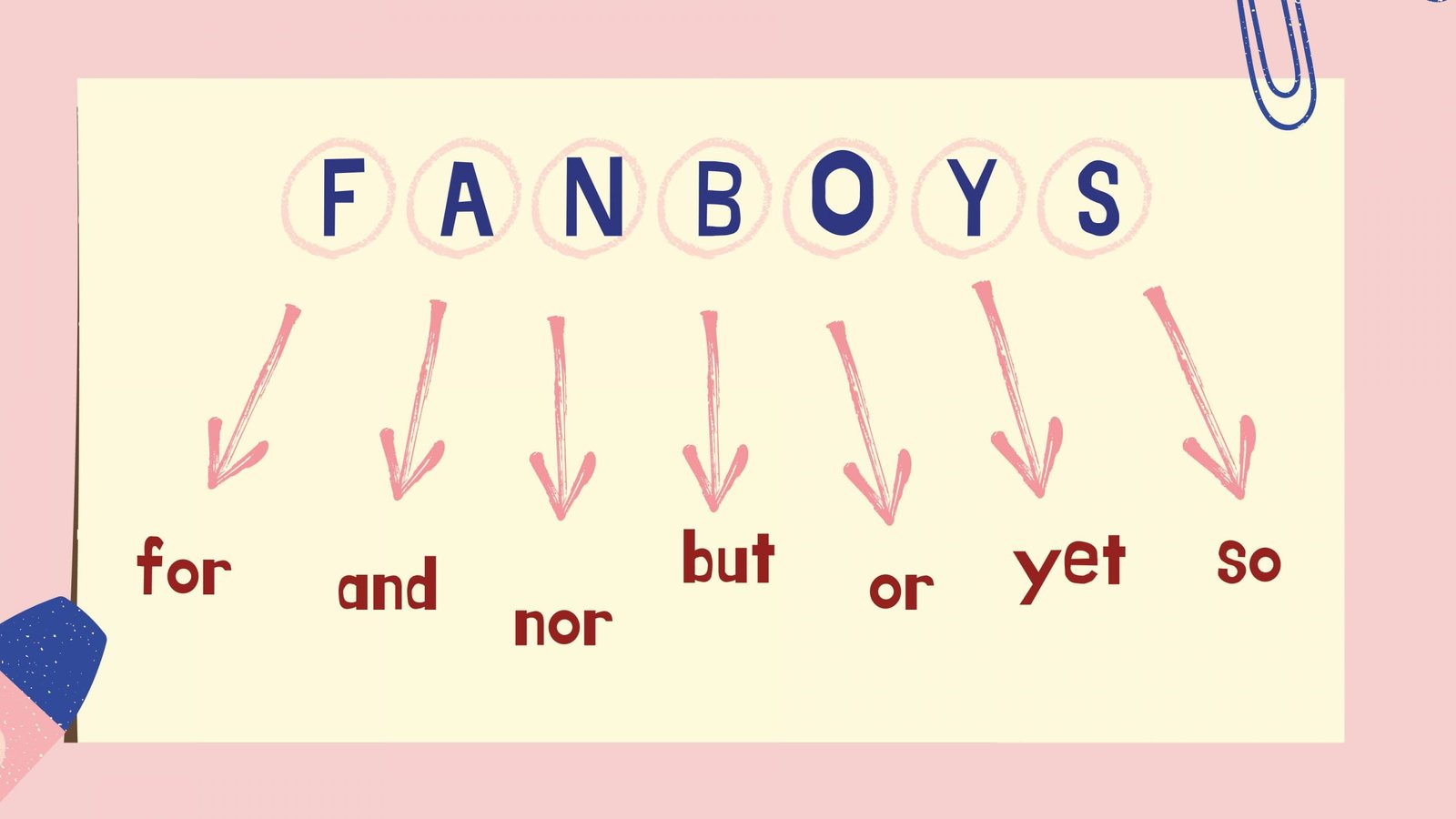
FANBOY Makeovers
We can use other conjunctions in place of these to express the same ideas in a different and stronger way. I call this the “Makeovers for FANBOYS”! Let us look at the first conjunction represented by “F.”
Example 1
FOR
The first conjunction in our acronym is “for” which we use to express the reason for something. Here is an example:
She usually leaves our visits early, for she has to work a lot.
Notice that we need to use a comma before the coordinating conjunction.
Makeover
We can use “because” to restate the same idea:
She usually leaves our visits early because she has to work a lot.
In this sentence, I do not need a comma since the subordinating conjunction “because” is in the middle of the sentence. If I wanted to start with my reason, then I would need to use a comma:
Because she has to work a lot, she usually leaves our visits early.
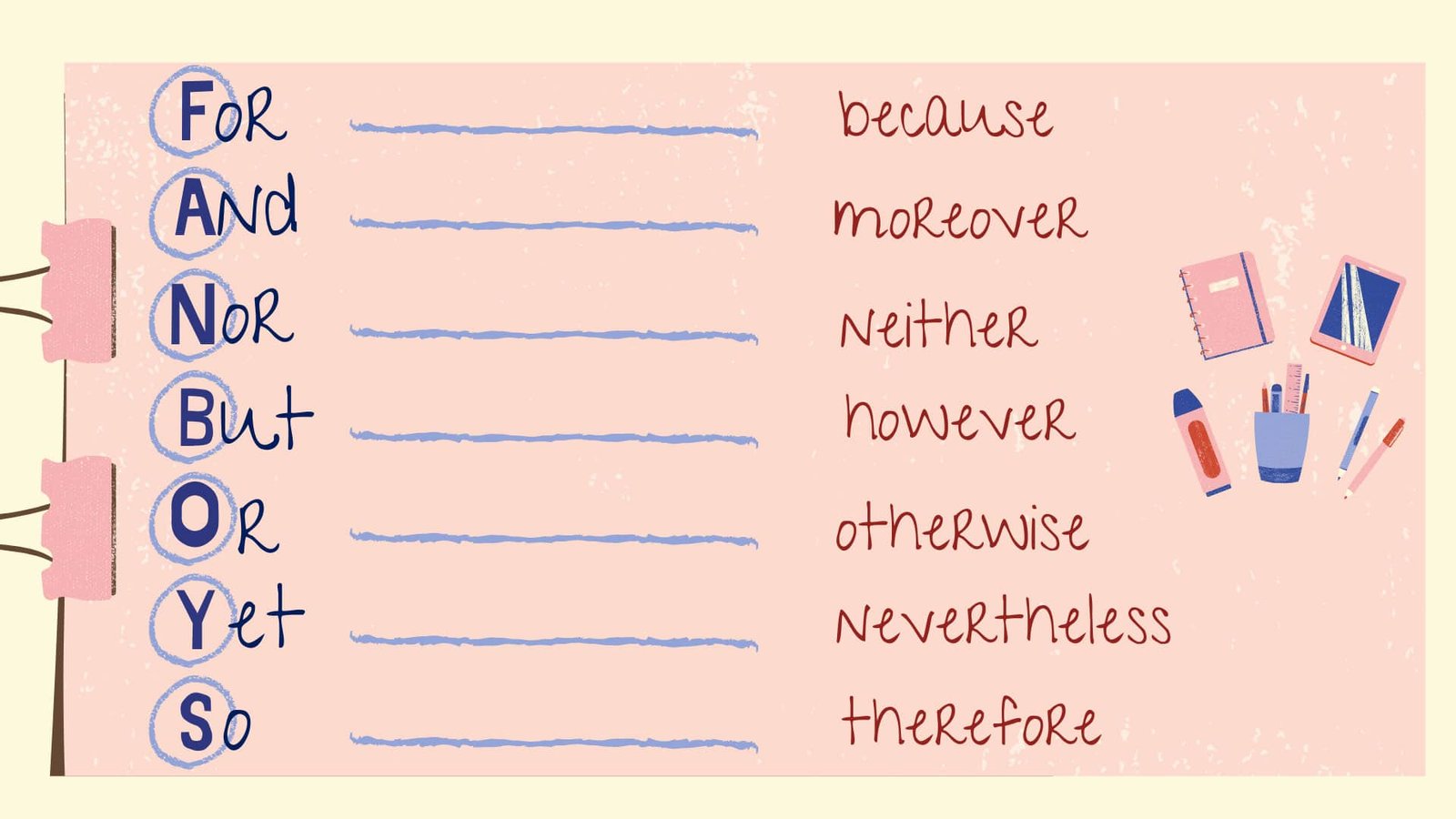
Example 2
AND
The next conjunction is “and” which we use to give additional information.
He works in marketing, and he manages the company.
Makeover
I can use “moreover” or “furthermore” to express the same idea:
He works in marketing; moreover/furthermore, he manages the company.
The punctuation differs in this sentence: We need to put a semicolon before the coordinating conjunction, namely “however” and “furthermore,” and place a comma after it.
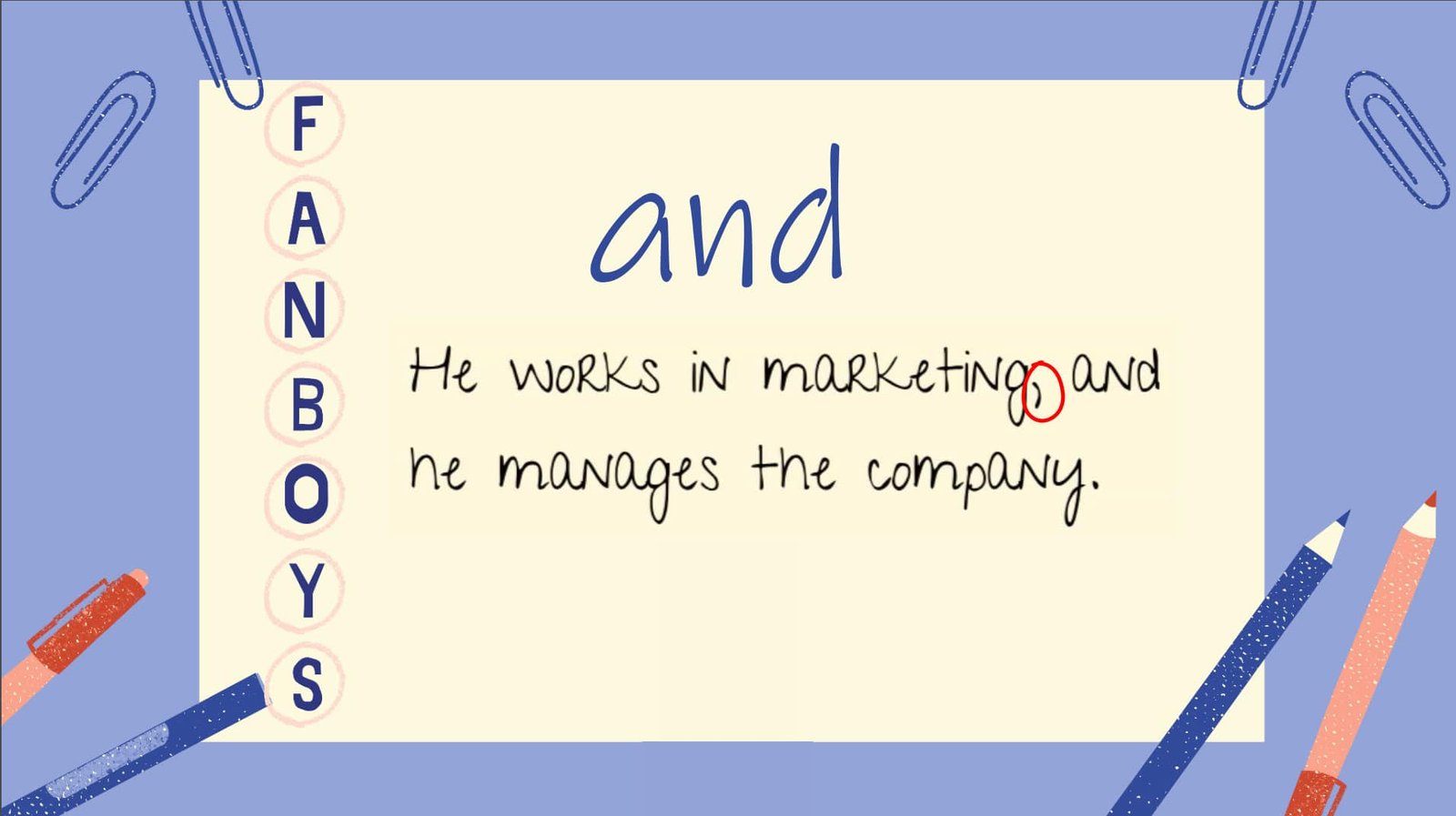

Example 3
Nor
“N” in FANBOYS stands for “nor,” which adds more information to a sentence that expresses something negative. Check out this example:
Harry does not miss any classes, nor does he want to miss any homework.
Makeover
I can use “neither” to express the same idea:
Harry does not miss any classes, neither does he want to miss any homework.
You will notice that after “nor” or “neither” we use an inverted sentence, which means the sentence structure that follows these looks like a question.

Need help?
Contact me or set up a free consultation.
You can find more examples of collocations in my video:
7 Powerful Conjunction Makeovers for Fanboys
Conclusion
I hope these new ways of combining ideas will liven up your conversations or writing. Try to challenge yourself and use these new conjunctions next time you write an email or attend a business meeting.

